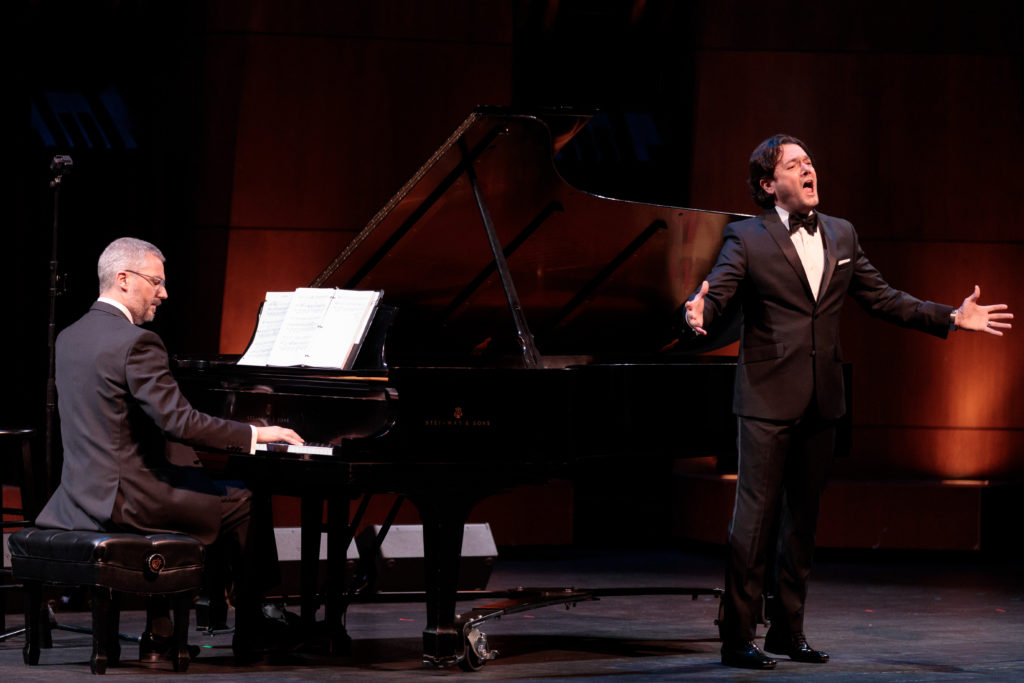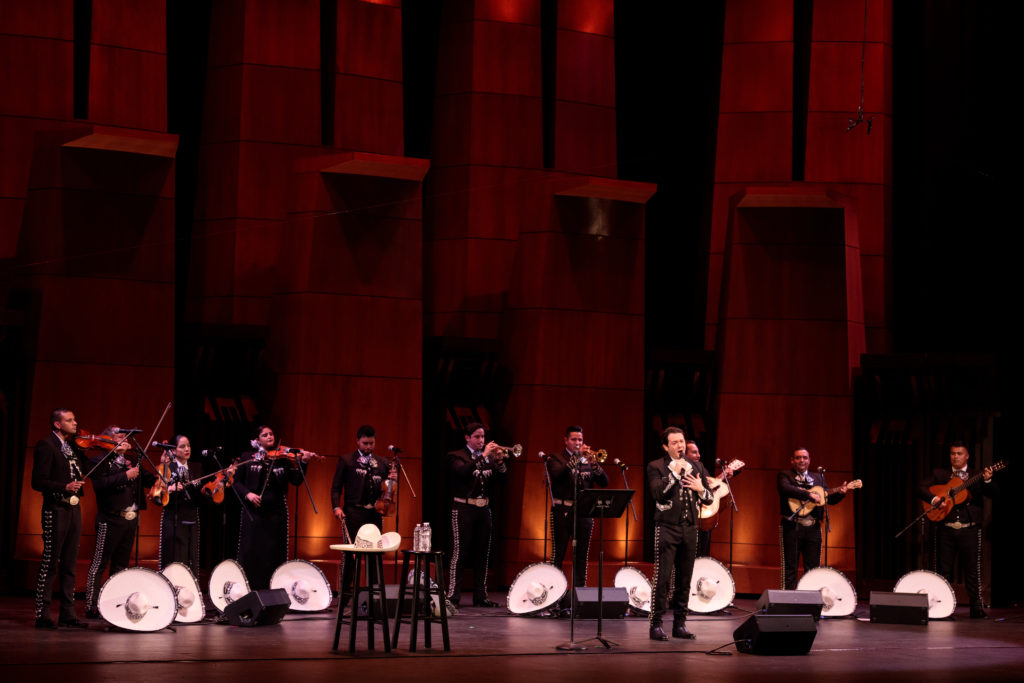Tenor Arturo Cruz-Chacón Cruz Triumphs in Escondido
Tenor Arturo Chacón-Cruz’s captivating concert Friday at Escondido’s California Center for the Arts has certainly raised the bar for the traditional solo recital. From singing an extraordinarily wide range of music on the program, to engaging the audience in song, to playful interactions with the rousing 10-member Mariachi Continental de México on the second half of the program—his was a concert with no equal. At least in this writer’s experience.

Jeremy Frank at the piano and Arturo Chacón-Cruz [photo (c.) Karli Cadel]
His panache and his passion for these Neapolitan songs easily trumped their familiarity, and he treated each one with tender attention, adding a modest cadenza to “O sole mio,” for example, and expressing a tearful rubato in the lyrics of “Come Back to Sorrento.” Pianist Jeremy Frank crafted unusually colorful accompaniments to these songs, alternating rich, orchestral textures with deft touches of imaginative tone painting.
From the familiar Neapolitan songs, Chacón-Cruz moved to three songs from Spanish zarzuelas, a repertory little known in North America, although I would be remiss if I failed to mention that just last month the San Diego State University Opera Theatre presented in concert Bretón and de la Vega’s zarzuela La verbena de la paloma. The zarzuela is a type of musical theater with spoken dialogue, similar to operetta or musical comedy, and its songs, properly called romanzas, can be quite dramatic. I was taken by Chacón-Cruz’s passionate “No suede ser” from Pablo Sorozábal’s La taverna del puerto, a lover’s desperately intoned entreaty that gives the tenor a generous cache of glorious high notes at the final cadence.
When Chacón-Cruz arrived at last to his opera arias, I confess I initially felt cheated to hear only two—after all, San Diego Opera presented this concert, and it is not unreasonable to think that a good portion of the audience was comprised of serious opera buffs. Fortunately, he chose two of Puccini’s most beloved tenor arias, and he delivered them with heroic confidence, consistently lustrous tone, and ringing high notes! In his deeply emotional account of “E lucevan le stelle,” Cavaradossi’s valedictory aria in Tosca, Chacón-Cruz communicated the character’s searing resignation while skillfully building the music’s dramatic climax. From his first line of “Nessum dorma,” the universally recognized hit aria from Turandot, it was clear that he owned this triumphant aria. He told the audience that he was contracted to sing his debut onstage role as Calaf in a Turandot production a year from now, and from his performance on Friday, I would say he is ready. What is thrilling about Chacón-Cruz’s tenor is the warm radiance of his mid-range continues to bloom as his voice ascends to his confident upper register–precisely the type of tenor every verismo opera demands.
And now that General Director David Bennett has treated the San Diego Opera audience to the vocal splendor of this tenor, we expect to experience him in future San Diego Opera productions.

Arturo Chacón-Cruz with Mariachi Continental de México [photo (c.) Karli Cadel]
For his encore, Chacón-Cruz chose Agustín Lara’s evergreen “Granada.”
San Diego Opera presented this concert on December 3, 2021, in the main concert hall at Escondido’s California Center for the Arts.

Ken Herman, a classically trained pianist and organist, has covered music for the San Diego Union, the Los Angeles Times’ San Diego Edition, and for sandiego.com. He has won numerous awards, including first place for Live Performance and Opera Reviews in the 2017, the 2018, and the 2019 Excellence in Journalism Awards competition held by the San Diego Press Club. A Chicago native, he came to San Diego to pursue a graduate degree and stayed.Read more…
